Ever suffered from cycling related foot pain? We ask the experts about the causes and how to overcome it
Have you been suffering from sore feet the morning after a big ride, or worse still during a ride? Here’s the experts’ advice on how to combat it
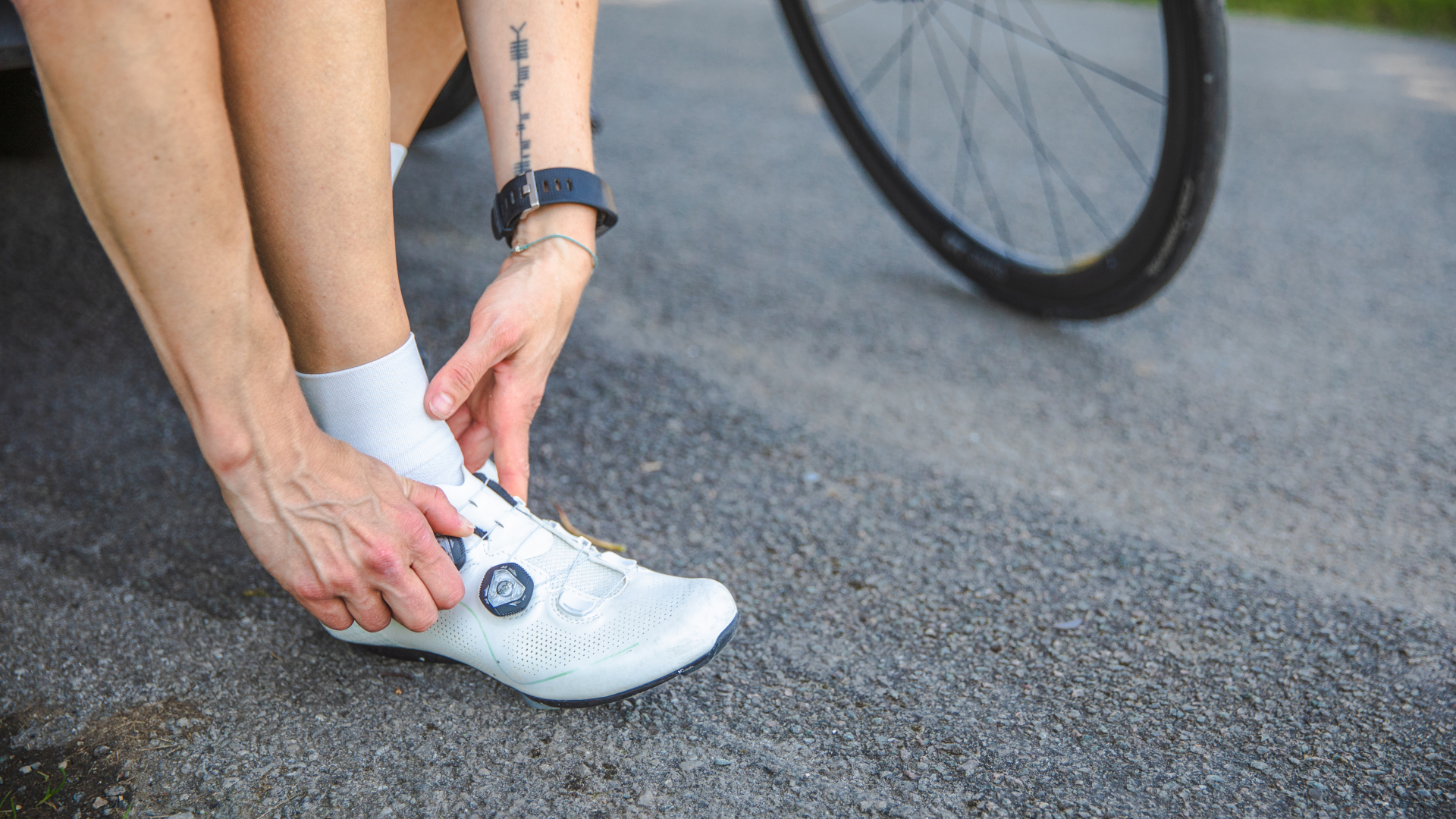
The foot-pedal interface is one of three contact points where we interact with the bicycle, and the point where most force is applied and transferred to propel our bikes. It is no surprise then, that many cyclists experience foot pain and other issues at this point. The extreme level of repetition related to cycling and an increase in the time spent on bikes contributes to its prevalence.
An Australian study in 2012 found that over half of cyclists (53.9%) reported experiencing foot pain whilst cycling, with the forefoot region the most likely to be affected (61% of all foot pain reported). The group of cyclists with greatest risk of developing foot pain were those who ride with an attached foot-pedal interface (clipless or toe straps/cages), where force is transferred through a small contact area.
Common foot issues for cyclists
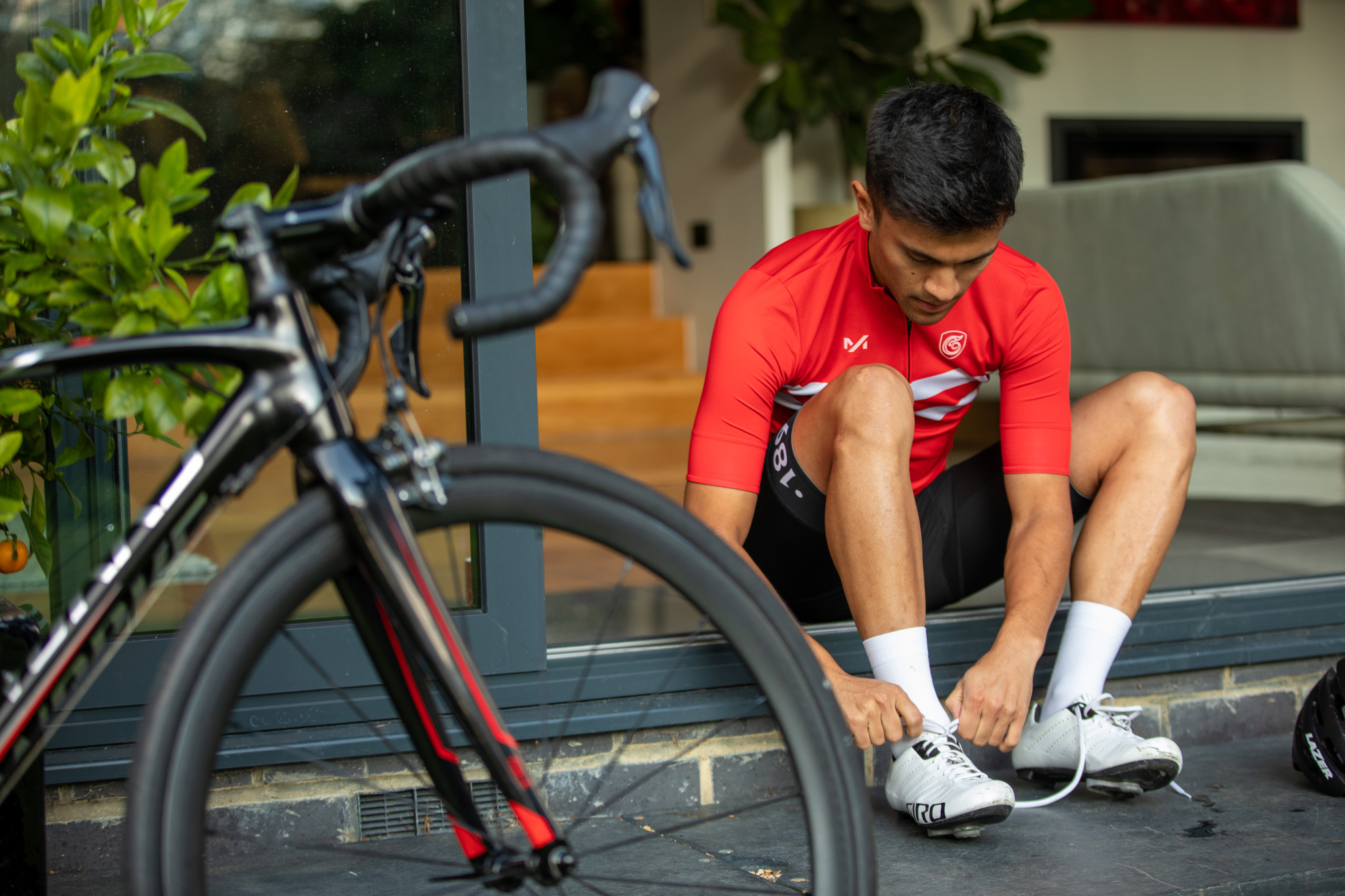
Most foot issues in cycling are caused by compression of the nerves (and blood vessels) that run along the sole of the foot. This can manifest as pain, pressure, numbness, tingling, or burning sensations around the ball of the foot, and is sometimes referred to as Metatarsalgia or “Hot foot”. Riding in cycling shoes that are too narrow or small is a common cause.
People with high arches tend to suffer more from these issues. This is because the reduced contact beneath their high arch concentrates the pressure directly under the balls of the feet. Cyclists may also experience pressure, pain or numbness on the outside, or less commonly, the inside of the foot.
These issues are usually worse on long endurance rides and on sustained climbing. You should also consider if you are prone to foot swelling in hot weather, which will cause further tightness and compression.
Those with an existing Morton’s Neuroma, an irritation of thickened tissue around the nerve between the foot bones, tend to have particular difficulties.
Other foot issues cyclists may encounter are plantar fascia or arch pain, achilles tendinopathy or blisters.
Get The Leadout Newsletter
The latest race content, interviews, features, reviews and expert buying guides, direct to your inbox!
How to prevent foot pain: at-a-glance tips
To keep your feet happy and enjoy miles of comfortable cycling, it would be wise to:
- Make sure your shoe is the correct fit for your foot
- Get the cleat position right
- Invest in some good quality cycling insoles
- Use wedges and shims as required
- Have your bike fit reviewed, especially saddle height
How to prevent foot pain in cycling
Do your cycling shoes fit?
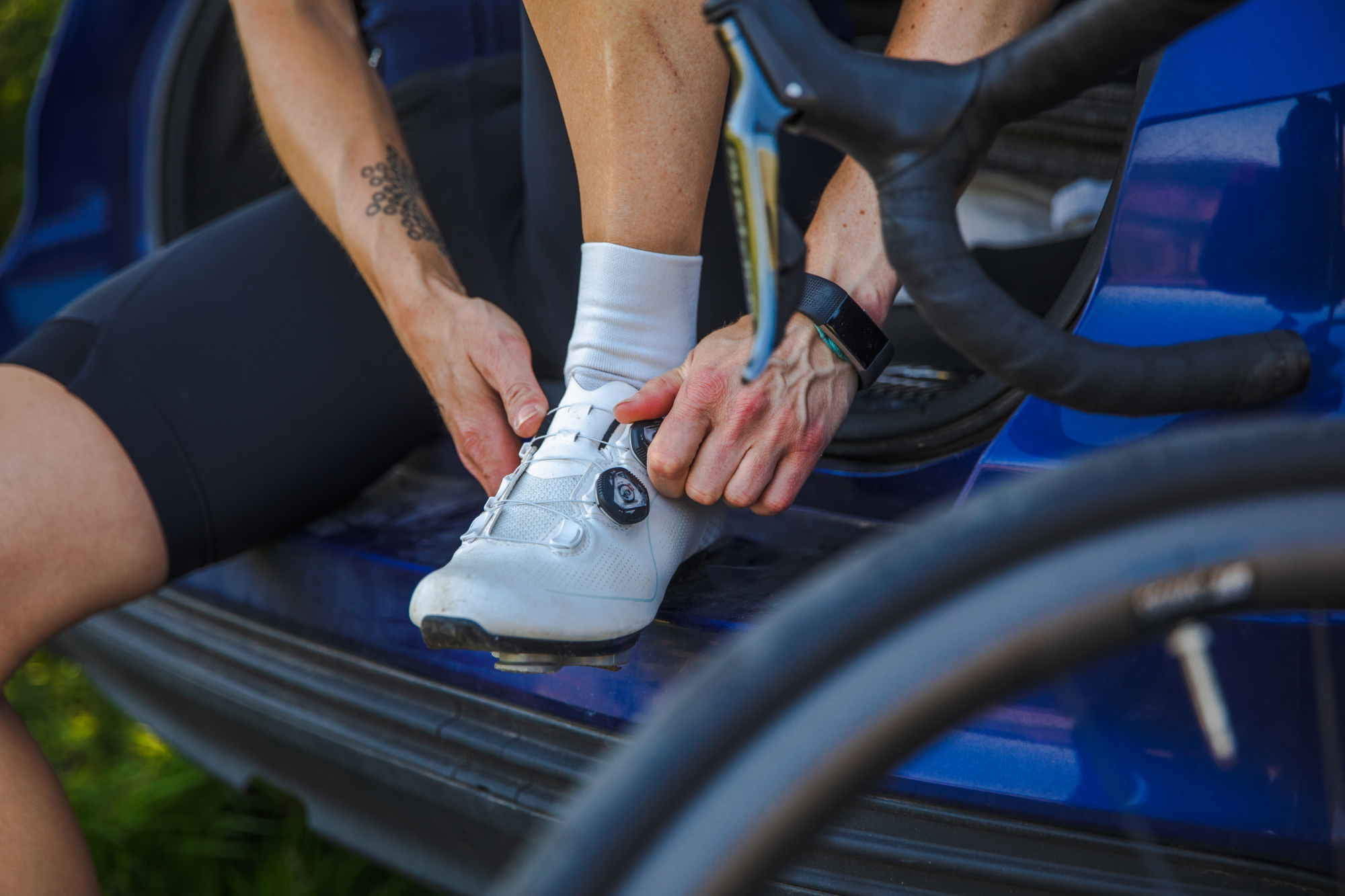
You may have invested in one of the best cycling shoes, but that’s no good if it doesn’t fit you right. Correct fitting shoes is one of the most, if not the most important factor in avoiding foot pain. Ronan Descy from Form Bikefitting, who worked as a bike fitter for 15 years and now designs and sells a variety of shims, wedges and other bike fitting products, reiterates this:“Shoe fit is paramount. A badly fitting shoe will either create pain in the case of an overly tight shoe, or create an unstable environment in the case of a loose shoe. They should fit like gloves”.
Unfortunately, obtaining a well fitting shoe can be quite complex. We all come in different shapes and sizes, and that includes our feet!
The size and width of the shoe are the first things to consider. Many people buy shoes that are just not wide enough for their feet, particularly around the toe box, resulting in issues with compression.
Another common mistake is to size up to increase width, which then presents other problems such as the cleat holes being too far forward and hence being unable to position the cleat optimally, the foot slipping forward in the shoe, or the arch being located in the wrong position.
Shoes that are too big can also result in toe clawing as the foot tries to gain some stability, overloading the intrinsic foot muscles and leading to plantar fascia pain.
Bont are a shoe brand known for their wide fits. “Our wide fit shoes have always been a true wide fit and this means the base is actually wider than a standard fit,” acknowledges Bont’s Global Marketing Manager, Alex Malone. “There’s only a few brands out there to offer a true wide fit as there are inherent costs on the manufacturing side – with an entire range of wide lasts needed for production – as opposed to simply offering a larger volume and taller upper shoe built on the standard width sole”.
They have also created a range to suit most people’s needs. “Our Vaypor S for example, comes in 19 sizes and four widths (narrow, standard, wide and Asian fit), before you even consider semi and full custom options”.
Shoe brands that produce shoes in half sizes and varying widths, such as Lake, Shimano, and Sidi, will increase your chances of finding a cycling shoe that fits well.
The hardness of the sole may also be of consideration if you suffer from foot pain or numbness. Greater shoe stiffness results in less shoe flex and less energy wastage during power transfer, increasing cycling efficiency, hence the widespread use of carbon fibre soles, especially in top end shoes. However, carbon fibre soled shoes produce higher peak plantar pressures than those of plastic design (18% at 400w), which some feet may not cope with.
The use of a good cycling specific insole can help to alleviate pressure by distributing load more evenly, which I will address later.
Another aspect of the shoe to consider is the shape and curvature of the sole, known as the last. I generally tell people that if the shape of their foot does not look like the shape of the shoe, they are likely to run into problems!
The closing system of the shoe can individualise and improve the fit to your foot shape and size. A two boa (or similar) system provides firm fastening and will allow you to control the shoe’s volume of the forefoot and rearfoot independently. Shoes with heat moulding can also provide a more customised fit.
I always recommend to my clients to try shoes on before purchasing to determine if it fits your foot. However, this is becoming increasingly difficult, with less shops stocking shoes due to the tendency to buy online. Whilst nothing beats seeing the shoe in the flesh, companies such as Lake and Bont have developed good online guidance on their websites for sizing and choosing suitable shoes.
A good knowledge of shoe brands can also increase the likelihood of finding a well-fitting shoe. Brands tend to have certain characteristics in regards to width, shape, cleat hole placement, materials used, and range of sizing and width options. Some research or an appointment with your bike fitter could prove valuable in this regard.
Are your cleats positioned correctly?
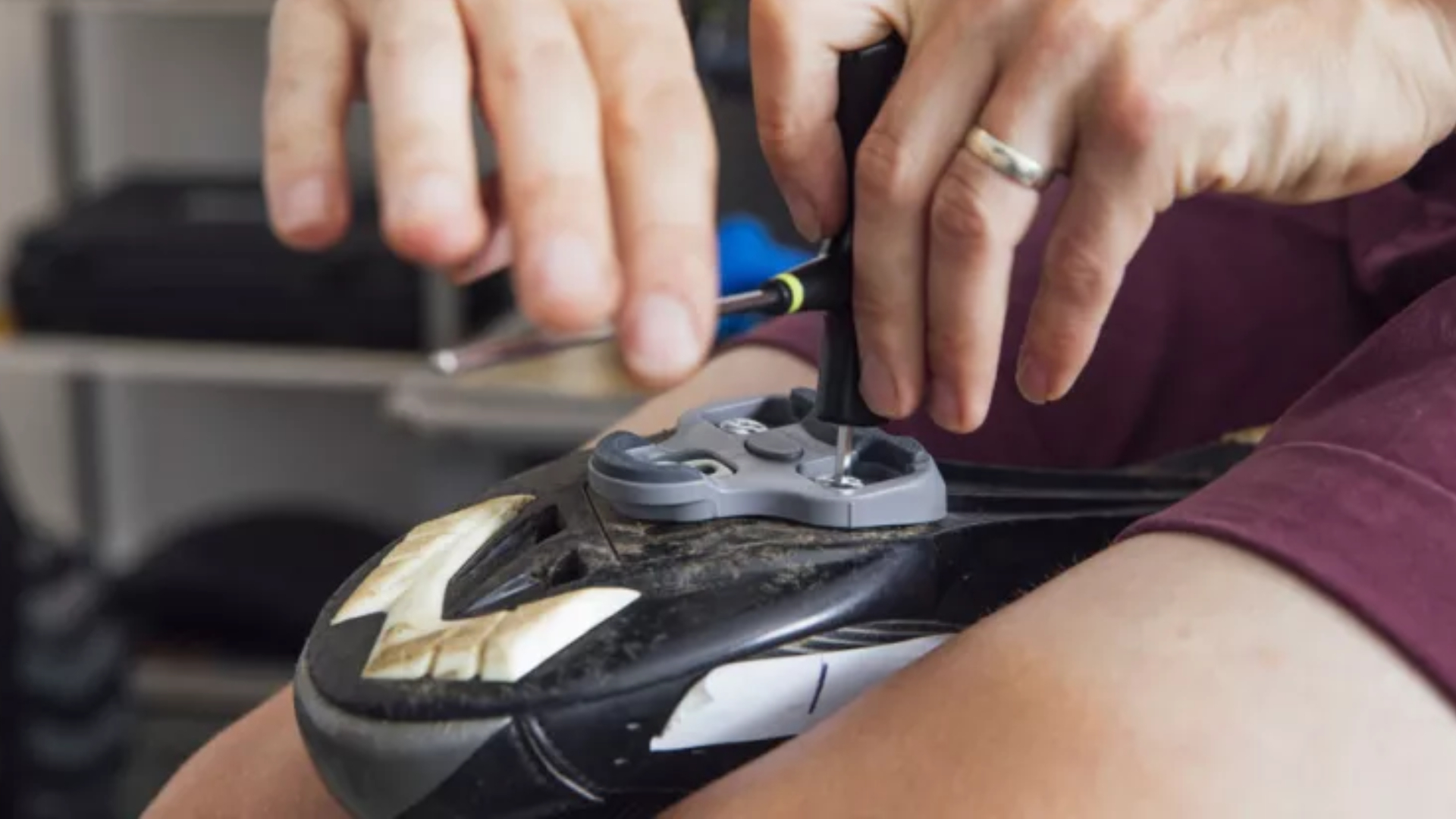
Inappropriately placed cleats is another contributor to foot pain in cycling. Placing the between 10- 20mm behind the ball of the foot decreases compression of nerves and blood vessels under the metatarsal heads, minimising the chances of foot and toe pain and numbness. Ronan also favours this position: “A rearward cleat placement is always better and safer than a forward placement – less chance of something going wrong. Furthermore, cleats with float are always a safer option than fixed cleats.”
“Also, cleat position should be judged in relation to your own foot’s structure. If you have long toes then the ball of your foot will be further back, so a shoe with a more forward cleat bolt position will fast become problematic”.
Placing the cleats further back will also decrease recruitment of the calf muscles by reducing leverage from the ankle pivot point, which in turn reduces the chance of achilles overload and tendinopathy. There will also be less tendency to have excessive ankling (flexion and extension of the ankle throughout the pedal stroke) due to the shortened lever.
A stance width that is too narrow can result in pain or pressure on the outside of foot. Moving the feet further outwards may alleviate this, either by moving the cleats, or using pedal spacers or extenders. Cleats with insufficient float for your needs can also place excess pressure on the inside or outside of your foot.
Do you need insoles for your cycling shoes?
The function of the foot in cycling is to provide stability and transfer power. Cyclists need their foot to act as a rigid lever, to ensure every watt of power is transferred to the pedal. Footbeds or insoles lock up the foot creating more stability, requiring less muscle effort from the intrinsic muscles of the foot and lower leg to stabilise the foot in the shoe.
Cycling insoles need to be different to walking or running insoles where the foot is more dynamic. Walking insoles also tend to be high volume and too bulky to fit well in a cycling shoe, which can cause increased compression, and hence their design has changed over time.
Nathan White, a Podiatrist from Brisbane (Australia) and founder of Cobra 9 carbon cycling orthotics, talks about the properties of his products.
“A cycling insole needs to provide a high level of contour and a high level of stiffness with minimal weight. Our carbon fibre orthoses are 1mm thick with a weight of 10-15g. They provide longitudinal arch rigidity with some side to side flex”.
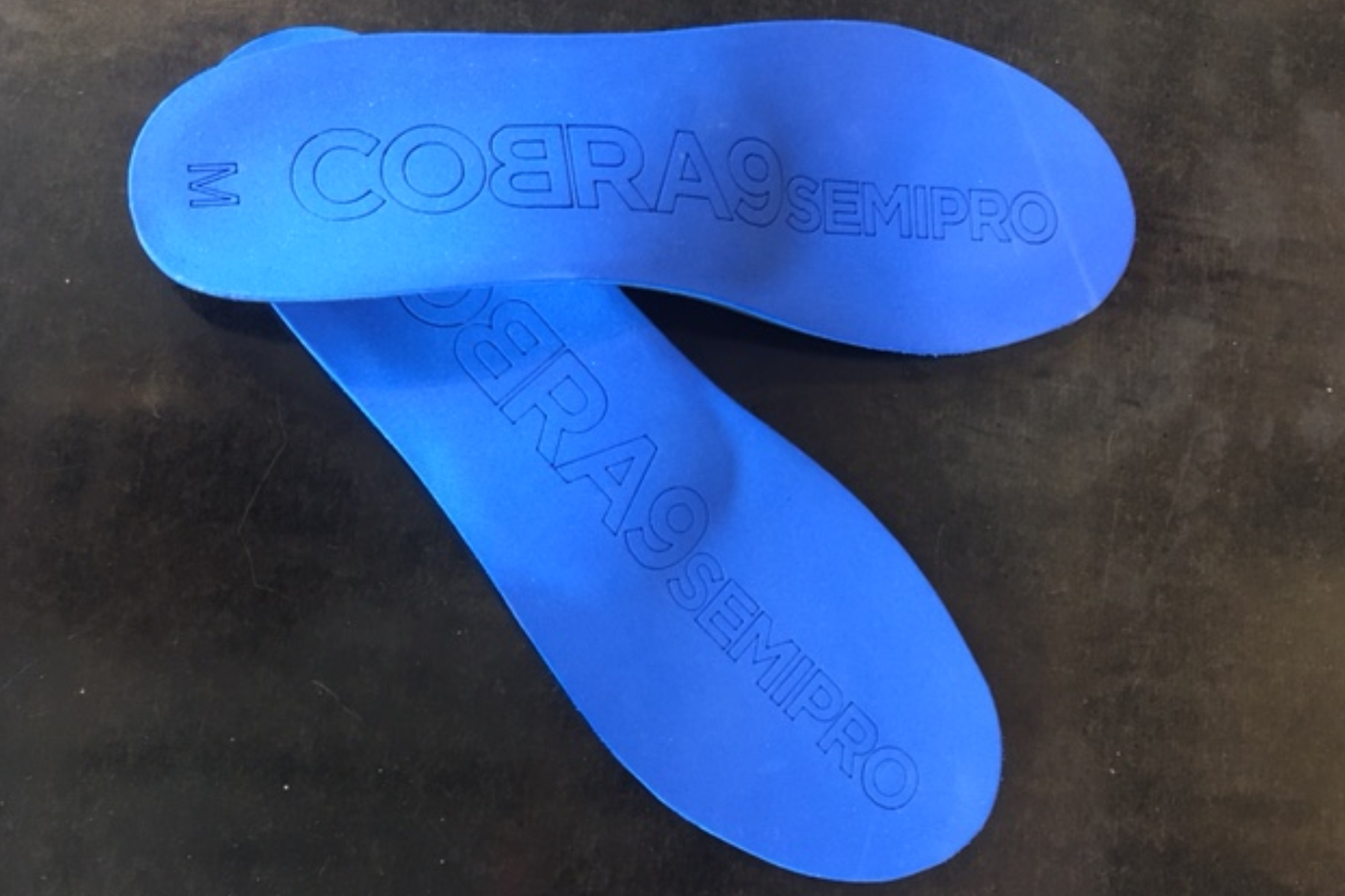
“The orthoses distribute pressure in a more even pattern, moving some pressure away from the forefoot more proximally into the arch. This shift in loading pattern and sharing of load will increase comfort. We are not aiming for a complete removal of pressure from the forefoot, but a meaningful shift. You can feel the arch but it still feels comfortable”.
“Our orthoses come in three different profiles and five sizes. There is also a custom option for those that lie outside the bell curve”.
Cobra 9 are not the only producers of high quality, effective cycling insoles. G8, Solestar and Lake are other companies that manufacture insoles that provide enough stiffness, support and contour. However, most off the shelf orthoses or those provided with cycling shoes, tend to be too low profile and too pliable, therefore providing minimal foot support and acting to fill up the shoe only.
Besides decreasing foot pain by sharing the load throughout more of the foot, insoles can also help prevent injury by reducing excessive pronation and hence torsional forces further up the chain. This may be particularly relevant for those with knee pain, but can also contribute to achilles, ankle or hip issues.
Increased foot contact area increases feedback to our proprioceptive system. This in turn will provide a signal to the nervous system to fire muscles in our lower limb and hip that provide stability. It can also result in a more powerful pedal stroke. In my experience, I find that those with a high arch or flexible, pronating foot benefit the most from cycling orthotics.
Is there anything else that can help prevent foot pain?
Wedges are used in cycling shoes to tilt or angle the foot. Cleat wedges will tilt the whole shoe, while in-shoe wedges can tilt the forefoot or heel in isolation.
Ronan from Form Bikefitting, who produces these products, outlines their benefits: “The use of wedges can even out medial or lateral pressure and improve one-sided foot pain. It can also improve knee tracking, stabilise the foot at the pedal interface, and improve foot proprioception”.
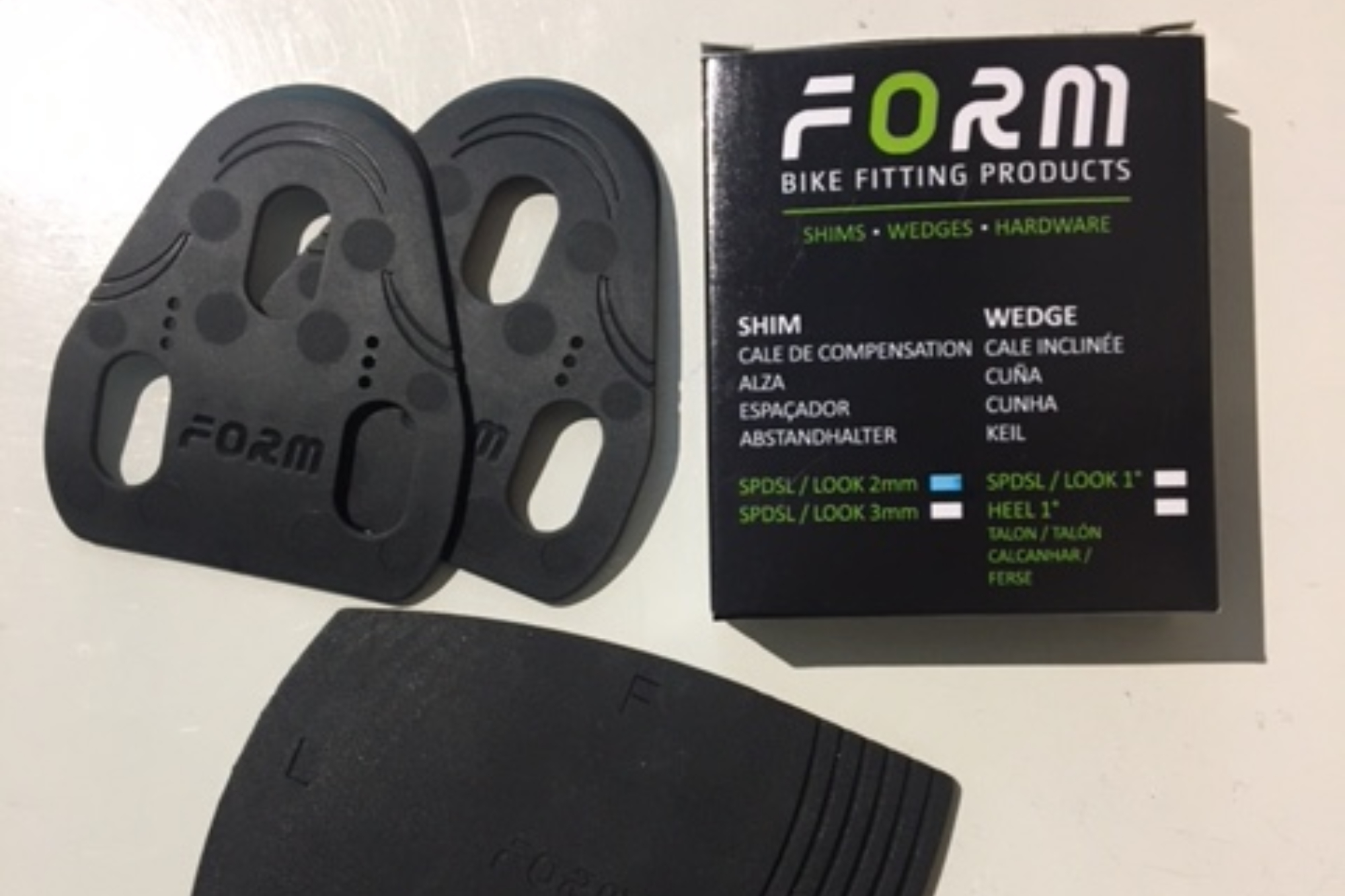
Cleat shims can be used to correct leg length discrepancies if required. Leg length discrepancies can result in loading one side (and foot) more than the other, or cause an asymmetric ankling pattern.
Metatarsal domes or pads when used appropriately, can reduce loading through the forefoot. They work by spreading the metatarsal heads apart and reducing peak load. However, the increase in volume inside the shoe can cause further compression. Care must also be taken with their placement.
Have you looked at your bike position?
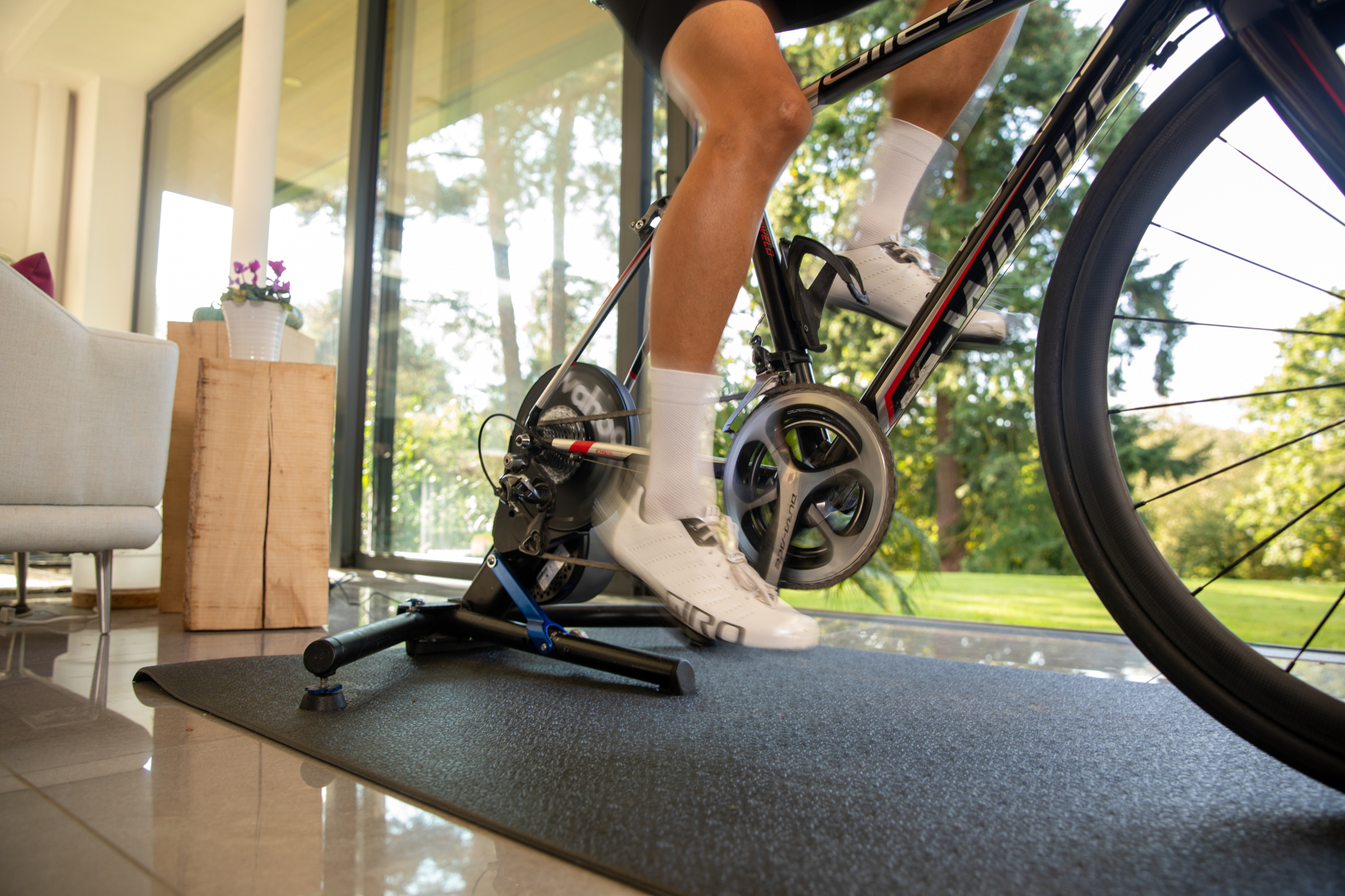
As most bike fitters will tell you, you cannot look at the foot-pedal interface in isolation. Consideration needs to be given to the overall bike set up, and whether it is less than optimal.
Bike seat height in particular needs attention. A saddle that is too high can result in a toe down pedalling style. This can cause instability of the foot and ankle, and the foot may slide forward in the shoe. Having a saddle too far back can cause similar issues.
Another thought...
The International Bike fitter magazine published an article last year about how Covid may have resulted in people’s feet becoming wider. The theory being that people are working from home more, often walking around barefoot, and not being required to wear tight, narrow dress shoes.
Given that cycling shoes have traditionally been on the narrow side, being unable to find appropriate shoes could be an increasing problem. I certainly have witnessed this in my clinic! The same can be said for postpartum women, who find that all the relaxin released during their pregnancy has caused their feet to widen. Hopefully shoe brands produce more wide fitting shoe options going forward.

Thank you for reading 20 articles this month* Join now for unlimited access
Enjoy your first month for just £1 / $1 / €1
*Read 5 free articles per month without a subscription

Join now for unlimited access
Try first month for just £1 / $1 / €1
Nicole Oh is a physiotherapist and bike fitter, with training in biomechanical assessments, sports injury rehabilitation, acupuncture and clinical pilates.
A competitive cyclist with a background in triathlon, Nicole raced at National level in the UK, also managing and co-founding the Les Filles Racing Team. Having moved to Sydney, she works as a physiotherapist at The Body Mechanic and continues to race competitively.
-
 A bike rack with an app? Wahoo’s latest, and a hub silencer – Sea Otter Classic tech highlights, Part 2
A bike rack with an app? Wahoo’s latest, and a hub silencer – Sea Otter Classic tech highlights, Part 2A few standout pieces of gear from North America's biggest bike gathering
By Anne-Marije Rook
-
 Cycling's riders need more protection from mindless 'fans' at races to avoid another Mathieu van der Poel Paris-Roubaix bottle incident
Cycling's riders need more protection from mindless 'fans' at races to avoid another Mathieu van der Poel Paris-Roubaix bottle incidentCycling's authorities must do everything within their power to prevent spectators from assaulting riders
By Tom Thewlis